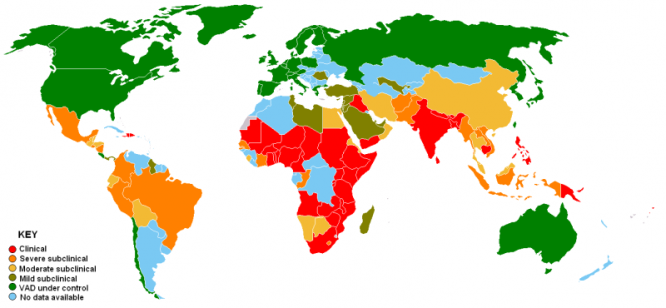Golden Rice
A moral Delema is taking place over a tiny grain of rice.

500,000 children go blind each year due a deficiency in vitamin A in their diets. Blindness is not the only consequence of vitamin A deficiency, death is also a result of this micronutrient deficiencies.
Scientists have developed rice that contains 200 the times of vitamin A needed in a regular diet. The researchers believe by introducing this product into areas where vitamin A deficiencies is prevalent, such as Africa and Asia, they will stop blindness and death from vitamin A deficiency.
What is interesting about this controversy is the scientific evidence, that this grain of rice contains more Vitamin A than the traditional grain of rice grown, is not up for dispute. The first level of knowledge containing information on the actual development on the Golden Rice is widely accepted among scientific disciplines. Scientists created this grain with the idea that it could help lower malnutrition rates in third-world and developing nations. In rice-based societies where Vitamin A deficiency was at a clinical stage, farmers could grow Golden Rice to feed the growing population in a safe and sustainable way. However, in the case of Golden Rice the science created in the first level of knowledge was not accepted within the second level of knowledge. Second level knowledge includes those actors and interest groups within the social worlds. It is here where we see the controversy over Golden Rice arise, as each social world perceives society and nature in a different way causing them to dictate to the public what should and should not be done to our plant. Golden Rice has yet to be tested for human consumption, or environmental impact causing social actors to speak out against the interests of science. But if this revolutionary grain could potentially save hundreds of thousands of lives, are we even more morally wrong to limit and constrain its development? As the social worlds battle this argument out, it has caused Golden Rice to come to a halt in its development until all social actors and worlds come to an agreement over its fate.
Below is a geographical map showing the scale and location of the vitamin A deficiency population. It clearly shows that those that are considered developing nations, for example India and Africa, and those who are most effected and in the mix of the controversy over Golden Rice
Scientists have developed rice that contains 200 the times of vitamin A needed in a regular diet. The researchers believe by introducing this product into areas where vitamin A deficiencies is prevalent, such as Africa and Asia, they will stop blindness and death from vitamin A deficiency.
What is interesting about this controversy is the scientific evidence, that this grain of rice contains more Vitamin A than the traditional grain of rice grown, is not up for dispute. The first level of knowledge containing information on the actual development on the Golden Rice is widely accepted among scientific disciplines. Scientists created this grain with the idea that it could help lower malnutrition rates in third-world and developing nations. In rice-based societies where Vitamin A deficiency was at a clinical stage, farmers could grow Golden Rice to feed the growing population in a safe and sustainable way. However, in the case of Golden Rice the science created in the first level of knowledge was not accepted within the second level of knowledge. Second level knowledge includes those actors and interest groups within the social worlds. It is here where we see the controversy over Golden Rice arise, as each social world perceives society and nature in a different way causing them to dictate to the public what should and should not be done to our plant. Golden Rice has yet to be tested for human consumption, or environmental impact causing social actors to speak out against the interests of science. But if this revolutionary grain could potentially save hundreds of thousands of lives, are we even more morally wrong to limit and constrain its development? As the social worlds battle this argument out, it has caused Golden Rice to come to a halt in its development until all social actors and worlds come to an agreement over its fate.
Below is a geographical map showing the scale and location of the vitamin A deficiency population. It clearly shows that those that are considered developing nations, for example India and Africa, and those who are most effected and in the mix of the controversy over Golden Rice

